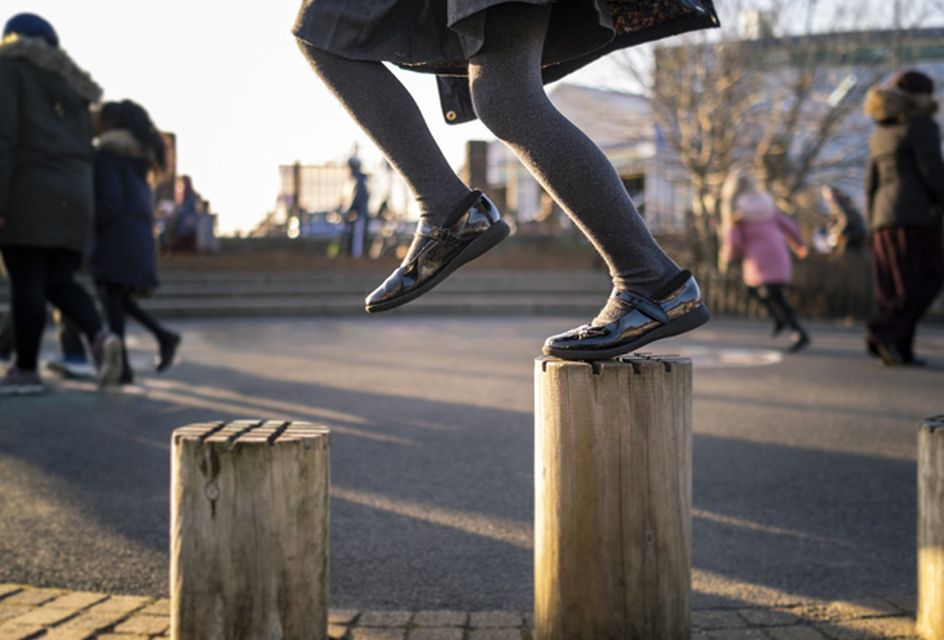Playground Rules: Boosting physical activity for children
RSPH’s new report sets out how schools can play a role in ensuring children are physically active.

We are facing a health crisis, and it starts with our children.
Poor diets and sedentary lifestyles mean child obesity is rising steadily. Addressing this has to be a major priority for Government and society.
Our report found that getting kids moving can play a major role in solving this. As well as reducing obesity, it leads to long-term health improvements for children and boosts academic outcomes.
Schools need to take a holistic approach which goes beyond just providing PE. By embedding physical activity across and around the school day, they can help make sure every child has an active childhood.
Playground rules: at a glance
Key findings:
- 41% of year 6 students will be overweight or obese by 2035
- 58% of children do less exercise than is recommended by the World Health Organisation
- 926 playing fields have closed across the country since 2010
- Children who are physically active see clear improvements in academic outcomes, from GCSE scores to classroom focus
Recommendations:
- Government should publish a new Youth Physical Activity Strategy, bringing together every part of the system to promote active childhoods
- Ofsted should report on how well schools promote health and wellbeing
- School funding should be reformed to make it easier for schools to make changes to promote physical activity
Join our healthy places campaign
You can help us to create a place for health in every setting and help drive a revolution in how we think of and deliver health support, enabling people to build healthier lives, rather than just preventing ill health. If you want to be part of that revolution, sign up below to hear about how you can help us to deliver healthier places and happier lives.

Why is physical activity important for children?
Shaping Lifelong Habits
The habits we build while we are young often last a lifetime. Whether it is taking part in regular exercise or reading for pleasure, schools should be helping children form behaviours which will keep them happy and healthy in adulthood. This is particularly important with physical activity, because we know inactive children are far more likely to become inactive adults.
Obesity
Obesity has many causes, but we know physical activity can help make a difference. Targeted interventions in schools have been proven to reduce children’s BMI scores. These are not just short term blips, but persist long beyond the intervention ends.
Mental Health
Exercise is good for your mental health. Benefits of exercise range from improved sleep to managing the symptoms of anxiety. When 1 in 5 children and young people have a probable mental disorder, improving physical activity can play a key role in improving mental health outcomes.
Academic Outcomes
Where children are more engaged in physical activity, we see clear benefits to their academic outcomes. They are likely to have higher GCSE scores, or improved focus in the classroom. This impact is particularly pronounced in maths outcomes – a key priority for the Government.
How can schools get kids active?
Activity in every lesson
On average, secondary school pupils spend over 70% of their time in school sat down. Even if we get children active at break times, and two hours a week during PE, this still represents a huge amount of their time spent in a sedentary manner. To address this, schools should design lessons so that children are required to move around as a natural, integrated part of the activities.
Active Travel
Not every child will want to play competitive sport. To ensure benefits for everyone, schools should look to implement active travel schemes for their children. Whether it is cycling lessons, or a School Streets scheme, these can help children get active without spending time doing sport.
Trained staff
Promoting physical activity does not need to mean individual school staff taking on any more tasks. Instead, we need to ensure that they are doing their current jobs in a way which facilitates active lifestyles. If staff have access to relevant training, and are supported by their employers to access this training, then they can be supported to implement this approach.
Appropriate Facilities
Converting space to encourage physical activity – whether that is traffic calming on the street outside, or installing new playground equipment – is a costly intervention at a time when school budgets are stretched, and many are facing serious health risks as a result of low maintenance budgets. Despite this, it is clear that investing in this fixed capital is crucial to improving levels of physical activity.



